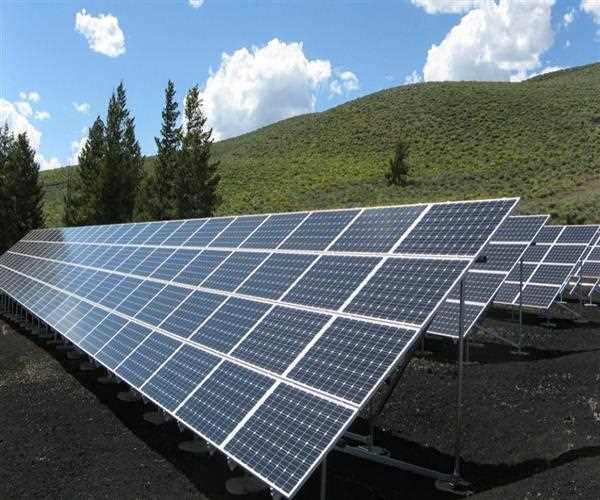As concerns about climate change and environmental sustainability continue to grow, the global energy landscape is undergoing a significant transformation. Renewable and clean energy technologies are playing a crucial role in this transition, offering sustainable alternatives to traditional fossil fuel-based energy sources. In this blog post, we will provide an overview of renewable and clean energy technology, exploring the various sources and their potential to reshape the future of energy production.
Renewable Energy Sources
Solar Power: Solar energy is derived from the sun's radiation and converted into usable electricity through photovoltaic (PV) cells or concentrated solar power (CSP) systems. Solar power is abundant, scalable, and can be harnessed almost anywhere. It is a clean and renewable source that reduces reliance on fossil fuels and lowers greenhouse gas emissions.
Wind Power: Wind turbines capture the kinetic energy of the wind and convert it into electrical energy. Wind power is a rapidly growing renewable energy source, known for its scalability and cost-effectiveness. It can be deployed both onshore and offshore, offering significant potential for large-scale electricity generation.
Hydropower: Hydropower harnesses the energy from moving water, such as rivers, dams, and tides, to generate electricity. It is one of the oldest renewable energy sources and currently accounts for a significant portion of global electricity production. Hydropower offers flexibility, reliability, and the ability to store and release energy when needed.
Biomass: Biomass energy is derived from organic materials such as wood, agricultural waste, and dedicated energy crops. These materials are burned or converted into biogas or biofuels to produce heat, electricity, or transportation fuels. Biomass is a versatile and readily available renewable energy source that can help reduce greenhouse gas emissions and waste.
Geothermal Energy: Geothermal power harnesses the heat from within the Earth to generate electricity. This renewable energy source utilizes the natural heat stored in the Earth's crust, typically through geothermal power plants or geothermal heat pumps. Geothermal energy is reliable, environmentally friendly, and has the potential for both large-scale and small-scale applications.
Clean Energy Technologies
Energy Storage: Energy storage technologies play a critical role in enabling the effective integration of renewable energy sources into the power grid. Batteries, pumped hydro storage, and thermal energy storage systems allow excess energy generated from renewables to be stored for later use, enhancing grid stability and enabling a more reliable and resilient energy system.
Smart Grids: Smart grids leverage digital technology to optimize the generation, distribution, and consumption of electricity. These advanced systems enable better monitoring, control, and coordination of energy resources, leading to improved efficiency, reduced energy waste, and increased integration of renewable energy sources.
Electric Vehicles (EVs): The transportation sector is a significant contributor to carbon emissions. Electric vehicles, powered by clean electricity, offer a sustainable alternative to conventional gasoline-powered cars. The adoption of EVs contributes to a reduction in greenhouse gas emissions and promotes a shift towards cleaner transportation.
Energy Efficiency: Energy efficiency technologies focus on reducing energy consumption while maintaining or enhancing the desired services. From efficient lighting systems and appliances to energy-efficient building design and industrial processes, energy efficiency measures help reduce overall energy demand and minimize environmental impact.
Benefits and Challenges
Renewable and clean energy technologies offer numerous benefits, including:
Reduced Greenhouse Gas Emissions: By displacing fossil fuel-based energy sources, renewable and clean energy technologies contribute to the reduction of greenhouse gas emissions, mitigating the impacts of climate change.
Energy Security and Independence: Diversifying energy sources and reducing reliance on imported fossil fuels enhance energy security and promote energy independence for nations.
Job Creation and Economic Growth: The renewable energy sector is a significant source of job creation, fostering economic growth and stimulating innovation in technology and infrastructure development.
However, there are also challenges associated with renewable and clean energy technologies, including intermittency (for solar and wind), high upfront costs, integration complexities, and limited availability of certain resources.
Conclusion
Renewable and clean energy technologies have emerged as a sustainable solution to address the environmental challenges posed by traditional energy sources. From solar and wind power to hydropower, biomass, and geothermal energy, these technologies offer abundant and clean alternatives. Additionally, energy storage, smart grids, electric vehicles, and energy efficiency measures support the integration and optimization of renewable energy systems. The ongoing development and adoption of renewable and clean energy technologies are critical to achieving a sustainable and low-carbon future, reducing carbon emissions, and mitigating climate change. By embracing these technologies, we can pave the way for a greener and more sustainable energy landscape.




Leave Comment